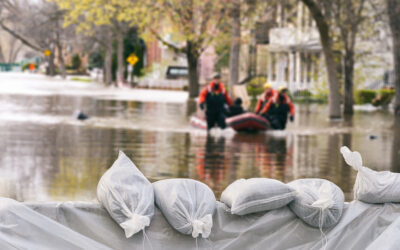Landscaping is more than just enhancing outdoor spaces — it’s about creating environments where people can relax, play, and connect with nature. As the industry grows, so do the opportunities for landscapers to expand their services and build thriving businesses. However, growth comes with unique challenges that require careful planning and protection. Understanding these challenges and ensuring your clients have the right lawn insurance coverage is key to helping them succeed.
The States That Are Leading Landscaping
Three states lead the industry with their unique demands and growing markets. With over 105,000 landscaping workers and market topping $18 billion, California is a true powerhouse. The state’s emphasis on sustainable practices and large-scale residential projects makes it a prime location for innovative landscaping services. Arizona’s desert climate drives demand for specialized services like xeriscaping, where water conservation is the main focus. This trend has led to steady growth in the state’s landscaping sector, currently estimated at over $3.5 billion, concentrating on drought-resistant and low-maintenance landscaping solutions. Nevada, much like Arizona, emphasizes environmentally conscious landscaping. The state’s desert climate has spurred a rise in demand for native plant installations and water-saving designs, making it a fertile ground for specialized services. With demand on the rise, it’s important for insurance professionals who work with landscaping businesses to make sure their coverage is as deeply rooted as possible.
Top 5 Hidden Risks in Landscaping
Even with the most diligent practices, landscapers face several hidden risks that could have severe financial consequences if not properly insured. Here are the top five:
- Underground Utility Damage
The most recent data from the 2022 DIRT (Damage Information Reporting Tool) Report by the Common Ground Alliance (CGA) indicated that there were over 532,000 reported instances of utility damage in 2022, marking a slight increase from previous years and emphasizing the ongoing risk associated with excavation and landscaping activities. The cost of utility damage incidents in the U.S. has also continued to rise, with the 2022 figures estimated to exceed $30 billion in direct and indirect costs, including emergency response, repairs, and disruptions to services, as well as potential legal liabilities. - Chemical Misapplication
The Environmental Protection Agency (EPA) has been stepping up its oversight of chemical usage in landscaping, especially in states like California, where regulations on pesticide and fertilizer applications are particularly stringent. The misapplication of chemicals such as herbicides and pesticides can pose serious health risks, including respiratory issues, skin irritations, and even long-term illnesses in both humans and pets. In a recent case from Aliso Viejo, California, residents reported sickness after a weed-killing chemical was sprayed near their homes, raising serious concerns about the safety of such practices. As tensions rise, and if the residents and neighborhood association fail to reach an agreement, the situation could escalate into a legal battle for which specialized landscaping insurance would be needed. - Tree-Trimming Accidents
Tree trimming, a common service, can quickly become hazardous and costly if your clients don’t have adequate insurance. Nationwide, about 43% of tree-worker fatalities are due to being struck by falling trees or branches, while another 33% are from falls. From inadequate safety measures to neglecting to use fall-protection equipment, California actually has one of the highest rates of tree-worker fatalities in the nation. While Nevada and Arizona have fewer incidents than California, landscaping contractors in these states still face risks, particularly in urban areas like Las Vegas and Phoenix, where tree trimming near power lines is common. - Business Interruptions Due to Weather
Arizona and Nevada experience some of the most intense heat waves in the U.S., with temperatures frequently reaching 110°F during the summer. In June 2024, record-breaking temperatures were recorded in Phoenix, Arizona, and Las Vegas, Nevada, which reached 112°F and 111°F, respectively. Temperatures like these are dangerous for outdoor workers and contribute to business interruptions. Prolonged heat can cause equipment failures, make outdoor work hazardous, and lead to health risks like heat exhaustion and heat stroke, forcing businesses to halt operations during peak heat periods.
Arizona, in particular, faces the challenge of the state’s annual monsoon season, which runs from mid-June through September. These storms can bring severe winds, heavy rainfall, and flash floods, disrupting landscaping projects. The unpredictability of monsoon storms adds to the risk, as sudden weather changes can cause delays, damage equipment, and create unsafe working conditions. - Worker Injuries
It’s estimated that extreme heat causes around 20,000 workplace injuries yearly in California, particularly affecting outdoor workers like those in the landscaping industry. This statistic highlights the significant risks associated with working in high temperatures, which can lead to heat exhaustion, heat stroke, and other serious health issues.
The extreme temperatures in Arizona during the summer months make it one of the most dangerous states for heat-related workplace injuries. Maricopa County, which includes the sprawling Phoenix metro area, reported a significant number of heat-related deaths and injuries in 2023, particularly among outdoor workers.
Help Your Landscaping Clients Protect and Grow Their Businesses
A deep understanding of the specific hazards and risks facing your landscaping clients is critical to securing appropriate coverage to protect their businesses. MiniCo’s exclusive Landscaping insurance program, currently available in California, Arizona, and Nevada, provides you with access to coverages designed to address the intricacies and nuances of the landscaping industry. Our dedicated program underwriters have a high level of market-specific experience as well as underwriting flexibility. Program coverages include general liability, inland marine, commercial auto, enhanced equipment breakdown, cyber liability, and more. Contact us to learn more and to get a quote.




